Abstract
The in vitro activity of fludalanine ( MK641 ) combined with pentizidone ( MK642 ) so as to give a fludalanine /D-cycloserine ratio of 1:1 was compared with the activities of ampicillin, ticarcillin, cefuroxime, ceftazidime, and trimethoprim against 452 recent isolates and known beta-lactam- and trimethoprim-resistant strains. In addition, the in vitro activity of fludalanine - pentizidone on four different media, including a defined medium ( DFN -2), was studied. The MIC of fludalanine - pentizidone against 90% of Escherichia coli, Klebsiella spp., Enterobacter spp., Providencia stuartii, Haemophilus influenzae, Neisseria gonorrhoeae, Staphylococcus aureus, and fecal streptococci was 4 micrograms or less per ml on DFN -2, and activity was somewhat reduced on the other media. Proteus spp. and Pseudomonas aeruginosa (90% MIC, less than or equal to 64 micrograms/ml) and Bacteroides spp. (90% MIC, 16 micrograms/ml) were less susceptible. Generally, fludalanine - pentizidone was less active than ceftazidime and comparable in activity to cefuroxime. beta-Lactamase-producing and trimethoprim-resistant strains tended to be susceptible to fludalanine - pentidizone . In the absence of human serum, the MBC of fludalanine - pentizidone was similar to the MIC. In the presence of increasing concentrations of human serum, there tended to be a greater difference between the MIC and MBC.
Full text
PDF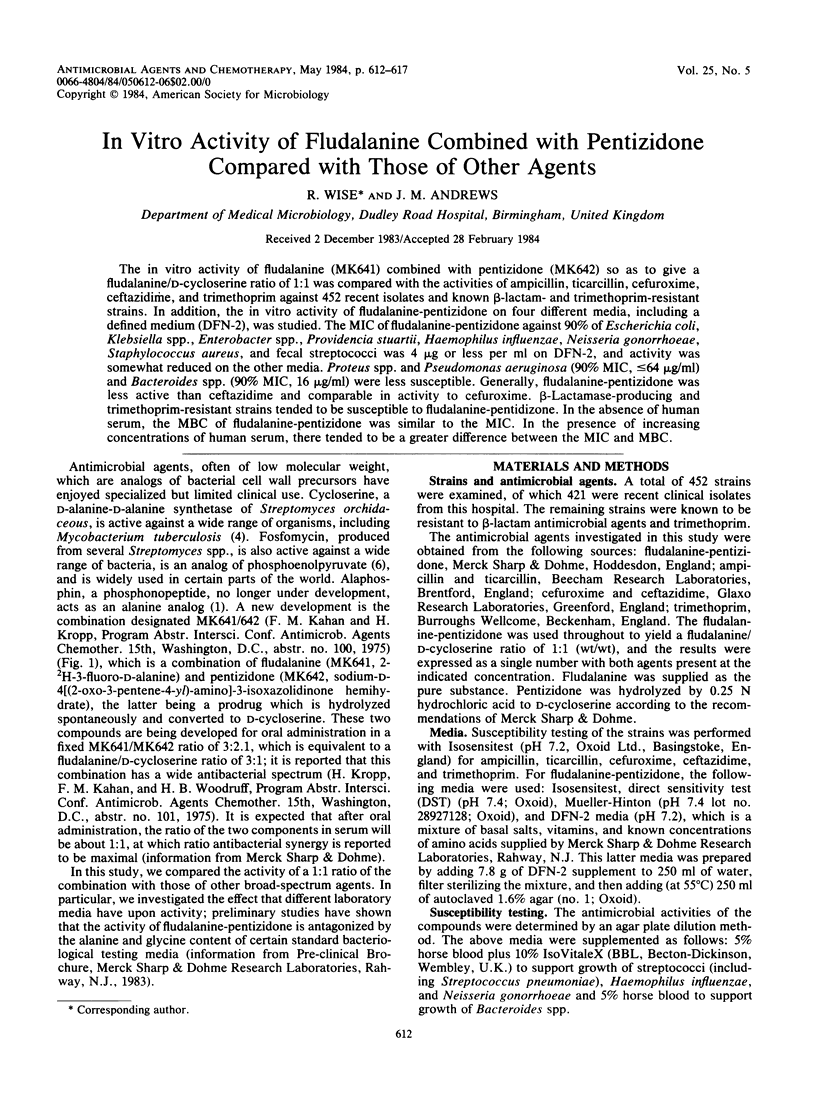
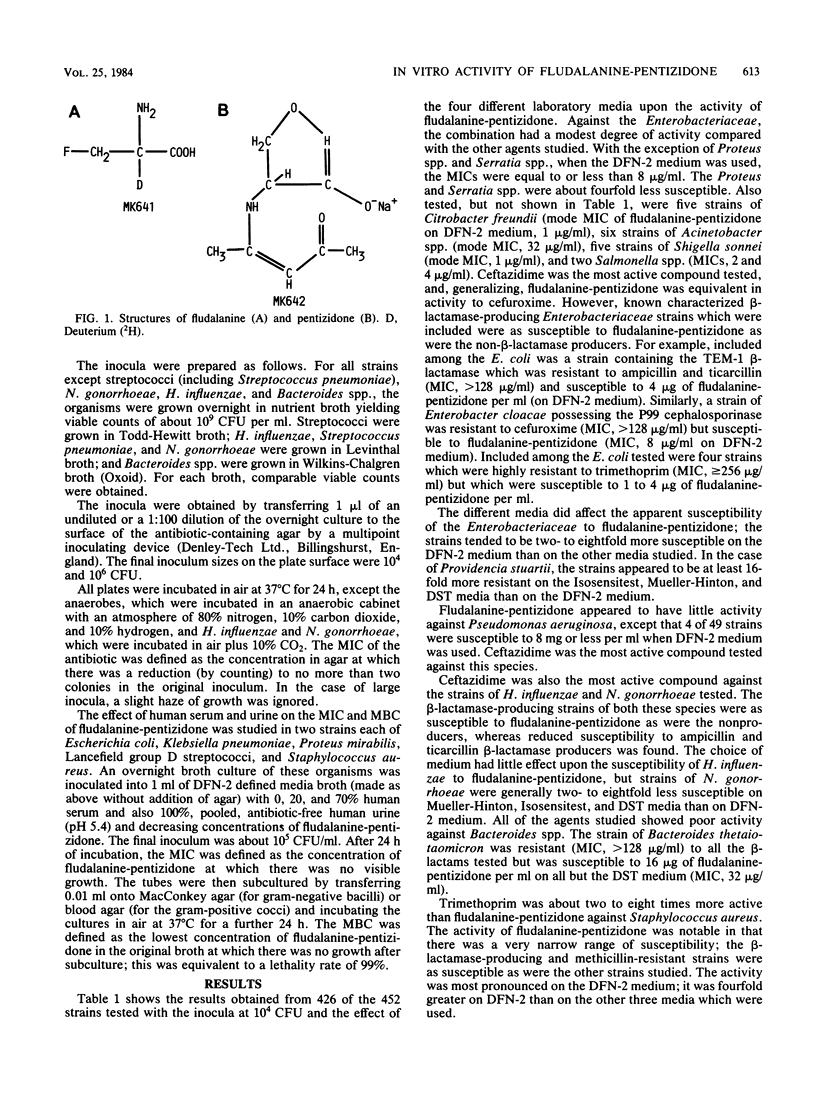
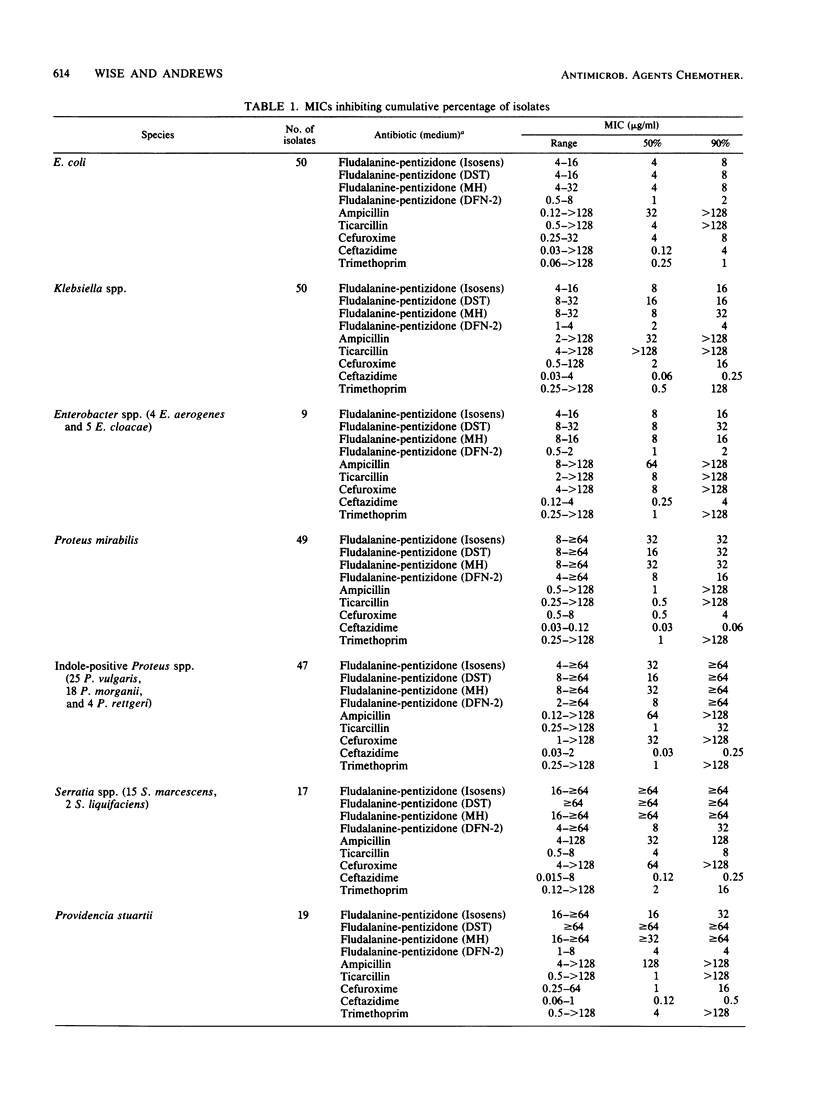
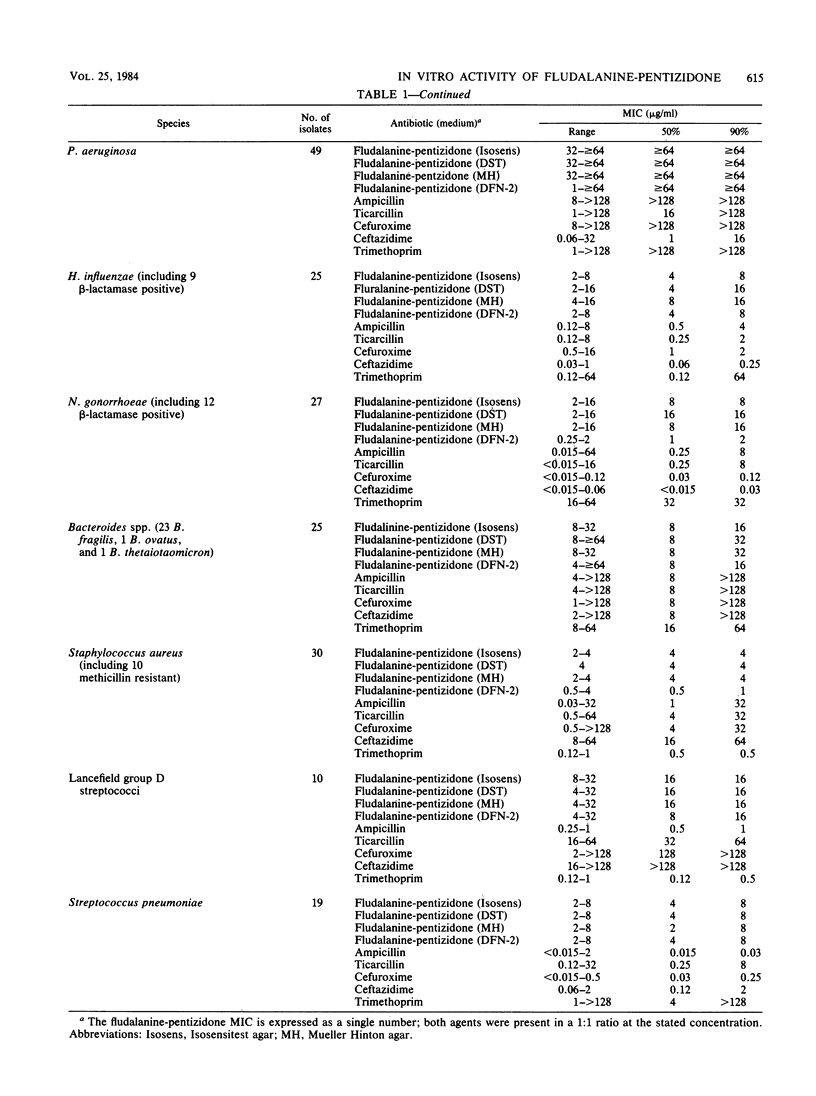
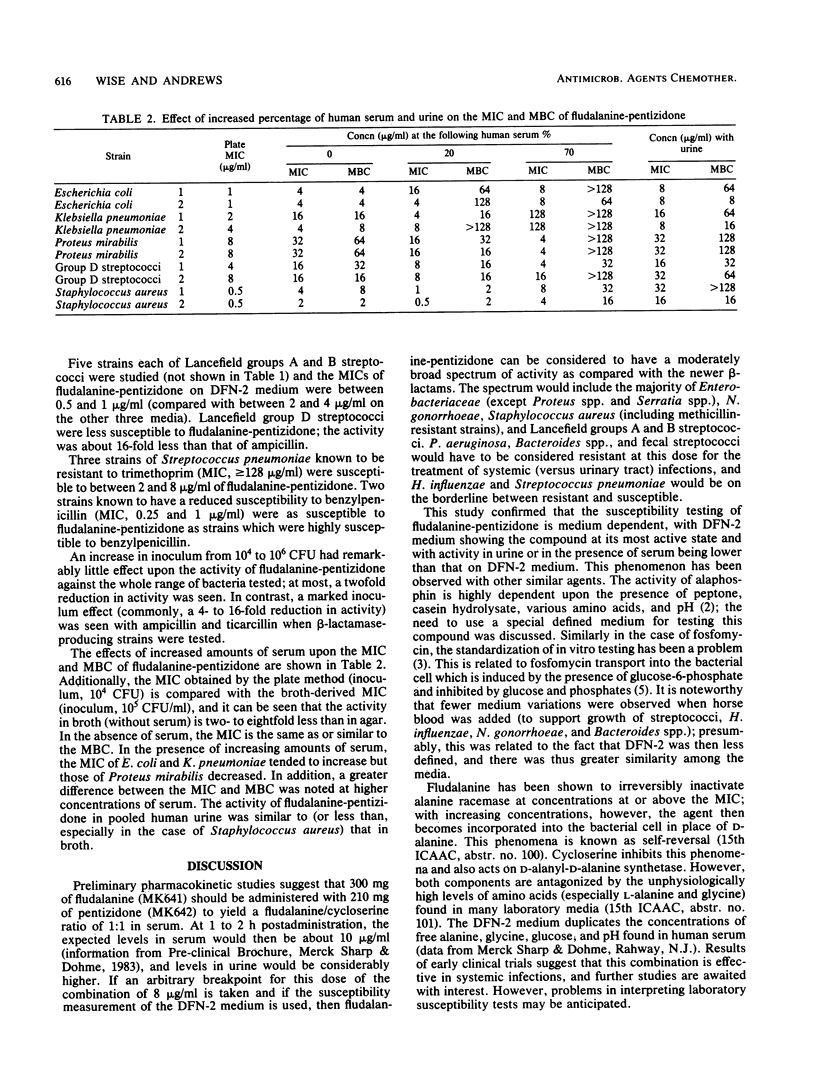
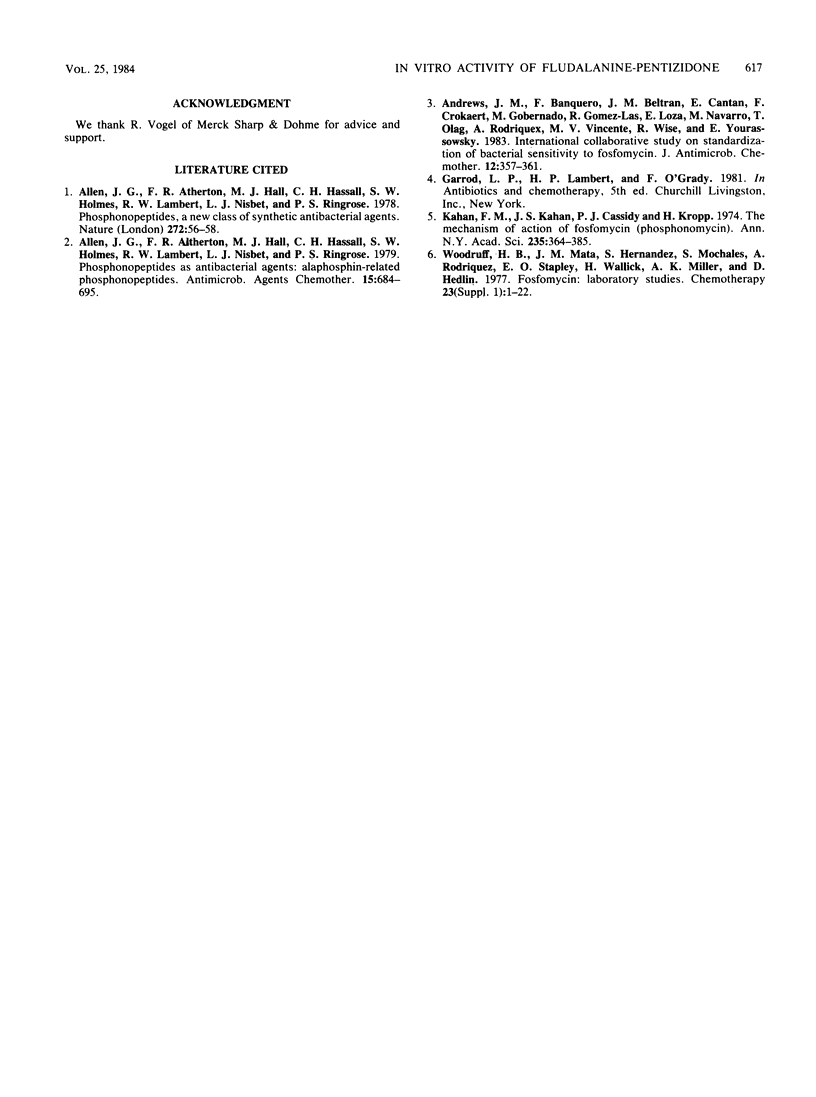
Selected References
These references are in PubMed. This may not be the complete list of references from this article.
- Allen J. G., Atherton F. R., Hall M. J., Hassall C. H., Holmes S. W., Lambert R. W., Nisbet L. J., Ringrose P. S. Phosphonopeptides as antibacterial agents: alaphosphin and related phosphonopeptides. Antimicrob Agents Chemother. 1979 May;15(5):684–695. doi: 10.1128/aac.15.5.684. [DOI] [PMC free article] [PubMed] [Google Scholar]
- Allen J. G., Atherton F. R., Hall M. J., Hassall C. H., Holmes S. W., Lambert R. W., Nisbet L. J., Ringrose P. S. Phosphonopeptides, a new class of synthetic antibacterial agents. Nature. 1978 Mar 2;272(5648):56–58. doi: 10.1038/272056a0. [DOI] [PubMed] [Google Scholar]
- Andrews J. M., Baquero F., Beltran J. M., Canton E., Crokaert F., Gobernado M., Gomez-Ius R., Loza E., Navarro M., Olay T. International collaborative study on standardization of bacterial sensitivity to fosfomycin. J Antimicrob Chemother. 1983 Oct;12(4):357–361. doi: 10.1093/jac/12.4.357. [DOI] [PubMed] [Google Scholar]
- Kahan F. M., Kahan J. S., Cassidy P. J., Kropp H. The mechanism of action of fosfomycin (phosphonomycin). Ann N Y Acad Sci. 1974 May 10;235(0):364–386. doi: 10.1111/j.1749-6632.1974.tb43277.x. [DOI] [PubMed] [Google Scholar]
- Woodruff H. B., Mata J. M., Hernández S., Mochales S., Rodríguez A., Stapley E. O., Wallick H., Miller A. K., Hendlin D. Fosfomycin: Laboratory studies. Chemotherapy. 1977;23 (Suppl 1):1–22. doi: 10.1159/000222020. [DOI] [PubMed] [Google Scholar]


